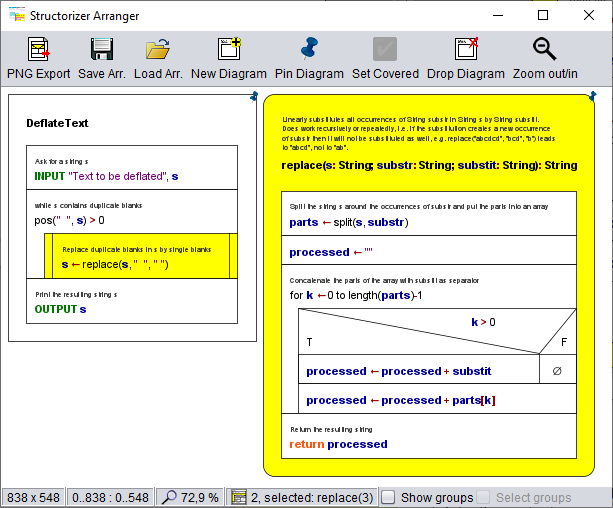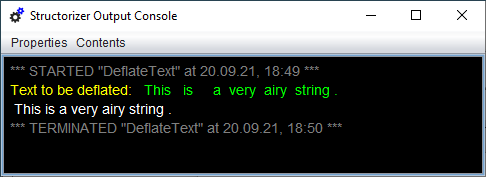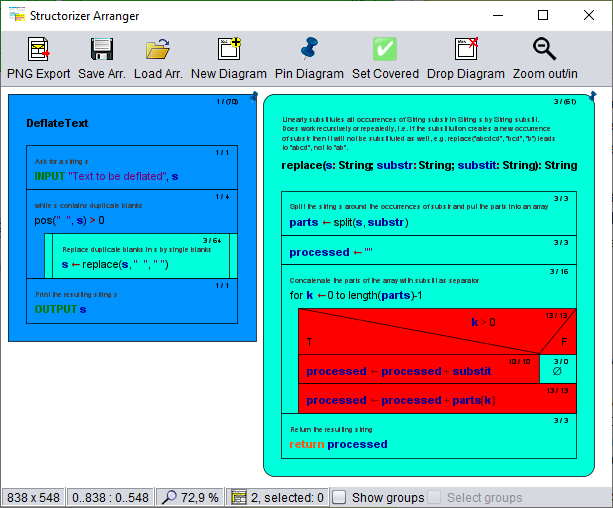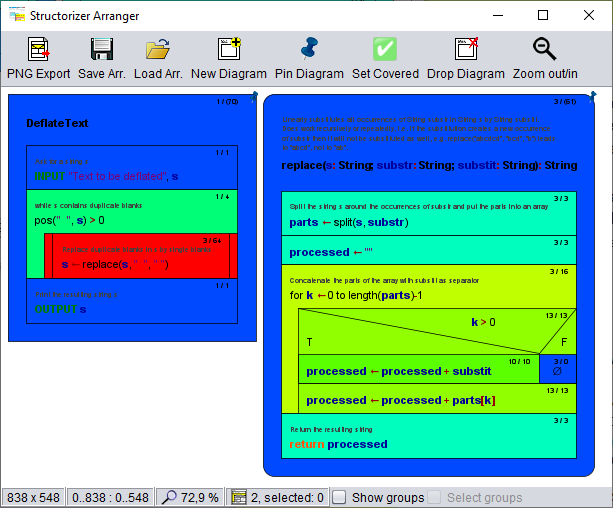|
Beginners will typically start with some simple mathematical calculations (say computation of the factorial, the greated common divisor or the like) in an IPO style based on immediately executable instructions without complicated syntax or with simple drawing tasks by means of Turtleizer primitives, where a reassuring success is easily achievable and provides a quick practical understanding of the algorithmic concepts. Observability via the animation facilities of the Debugger is as essential as the various hints of the Analyser.
Past this first, rather bottom-up style learning, the more experienced beginners' use case will not differ very much from the top-down Design with Internal Refinement use case - simply because this is usually the optimum way to solve a problem by means of an algorithm.
But in this case it is less important how compatible with a variety of programming languages the found solution may be than to achieve a working algorithm that can be tested and verified. The user will most sensibly have to adhere to the syntactical specifications of the Structorizer language dialect. That is why it makes sense to switch on Syntax highlighting and Analyser (see recommended preferences below).
With respect to our example task, the subroutine roughly sketched in the previous use case might be further refined until it gets completely implemented by means of instructions in executable Structorizer syntax, e.g.:

Now all kinds of test / debugging and run-time analysis (execution counting for hot spot detection or test coverage) might be explored to get a deeper understanding of algorithm behaviour:

Test coverage proof for the above input (mode "deep test coverage"):

Visualisation for the test run emphasizing the execution hot spot — which operations are executed most frequently (mode "execution count"):

Visualisation for the test run emphasizing the logarithmic execution time distribution over the diagrams — what operation load hides behind a certain algorithmic component, e.g. a loop or a call (mode "done operations, logar."):

When the algorithm is validated and analysed then the task is basically done, lessons learned.
Of course it is still possible to generate code for the found solution, being aware that some parts of the algorithm will have to be rewritten in a chosen target programming language as there is not always a handy equivalent for all built-in data types, operators, functions, and procedures of Structorizer.
By deliberately choosing executable instruction syntax, Structorizer may also be used for rapid prototyping and demonstration of algorithms for more or less small exemplary tasks, particularly in teaching. Thanks to the integrated data structuring capabilities like arrays, records (structs), and even text files, this may also hold for certain algorithms in some more ambitious contexts.
Most important activities and tools:
Recommended preferences:
|

